General Mills Bundle
Who Really Owns General Mills?
Ever wondered who steers the ship at General Mills, the giant behind your favorite cereals and snacks? Understanding General Mills SWOT Analysis is key to grasping its market position, but the ownership structure of this food industry titan is just as crucial. From Cheerios to Yoplait, discover the forces shaping the future of this iconic
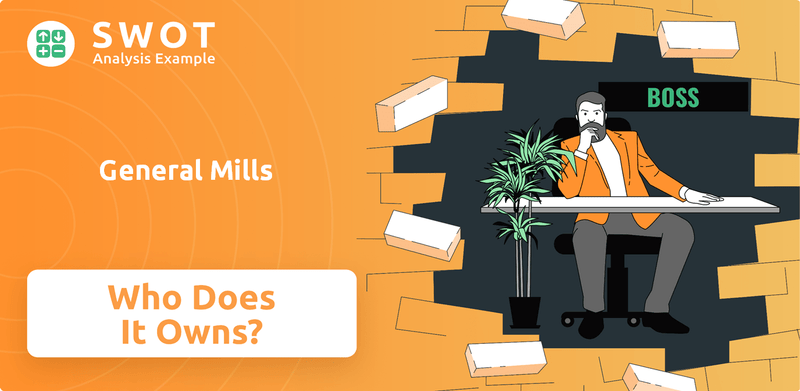
The story of
Who Founded General Mills?
The formation of General Mills in 1928 marked a significant consolidation in the flour milling industry. The company emerged from the merger of several entities, most notably Washburn Crosby Company. This strategic move reshaped the landscape of food production and distribution.
James Ford Bell, then president of Washburn Crosby, played a crucial role in orchestrating the merger. While a single founder isn't easily defined, Bell is often considered a key figure in the creation of General Mills. The merger brought together various companies, each with its own ownership structure.
Early ownership of the General Mills company was a complex arrangement. It involved the exchange of shares from the pre-existing companies. The initial major shareholders were the principal owners of the milling operations that merged. A public offering in 1928 broadened the investor base.
James Ford Bell, president of Washburn Crosby, was instrumental in the merger.
Early ownership was a mix of shares from the merging companies. Initial major shareholders were owners of pre-merger entities.
A public offering in 1928 allowed a wider range of investors to acquire stakes in General Mills.
Agreements dictated share exchanges and the structure of the new company. The merger resolved competitive dynamics among independent milling companies.
The vision was to create a diversified food company. This vision was reflected in the initial distribution of control and the public offering.
Specific early ownership disputes are not widely publicized for the immediate post-merger period.
The early history of General Mills ownership involved a transition from private ownership to a publicly traded entity. The initial shareholders were primarily the owners of the companies that merged. The public offering provided an opportunity for broader investment in the General Mills corporation. For more insights into the company's financial aspects, check out Revenue Streams & Business Model of General Mills.
General Mills SWOT Analysis
- Complete SWOT Breakdown
- Fully Customizable
- Editable in Excel & Word
- Professional Formatting
- Investor-Ready Format
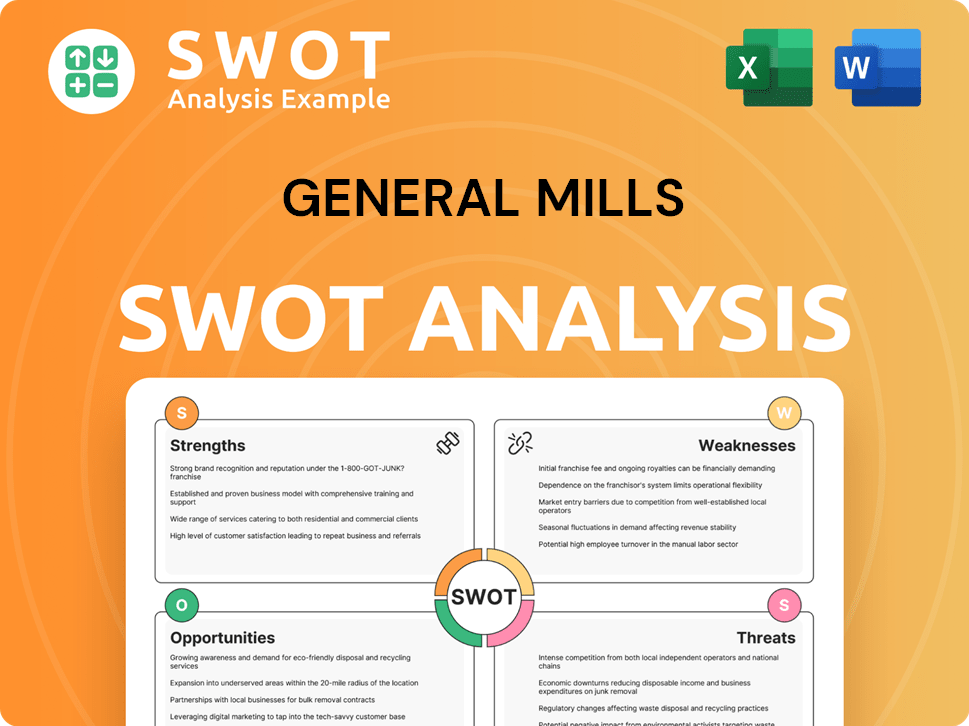
How Has General Mills’s Ownership Changed Over Time?
The evolution of General Mills ownership began in 1928 when it became a publicly traded company, listed on the New York Stock Exchange. This initial public offering marked the start of its journey as a publicly held entity. Over the years, the ownership structure has shifted primarily through the influence of institutional investors and mutual funds, a common pattern for established public corporations. The acquisition of Pillsbury in 2001 was a significant event, involving share exchanges that further diversified the shareholder base of the General Mills corporation.
As of April 2025, General Mills ownership is largely held by institutional investors. These entities, including The Vanguard Group, BlackRock, and State Street Corporation, hold substantial portions of the outstanding shares. For example, The Vanguard Group often holds over 10% of the company's shares, while BlackRock typically holds around 8-10%. State Street Corporation's stake usually ranges from 4-6%. These figures are subject to change based on market dynamics and investment strategies. Individual insider ownership, including shares held by executives and board members, represents a smaller percentage compared to institutional holdings, yet it aligns their interests with shareholder value. Continuous portfolio rebalancing by institutional investors and trading activities by individual investors constantly reshape the ownership landscape. This dynamic influences company strategy by pushing management to maintain consistent financial performance and adhere to governance best practices, as major institutional investors often engage with company leadership. For more insights, you can read about the Growth Strategy of General Mills.
| Stakeholder | Approximate Shareholding (April 2025) | Notes |
|---|---|---|
| The Vanguard Group | Over 10% | One of the largest institutional holders. |
| BlackRock | 8-10% | Consistently holds a substantial stake. |
| State Street Corporation | 4-6% | Holds a significant portion of shares. |
The significant institutional ownership of General Mills, along with the influence of major shareholders, directly impacts the company's strategic direction. These stakeholders often have a vested interest in the financial performance of the company. The continuous monitoring and engagement from these major shareholders help shape the company's long-term goals and ensure that it remains competitive in the market. The company's financial performance is critical for these shareholders, influencing their investment decisions and overall portfolio returns. Therefore, the ownership structure of General Mills company plays a crucial role in its governance and operational strategies.
General Mills ownership is primarily held by institutional investors like The Vanguard Group and BlackRock.
- Institutional investors significantly influence the company's strategy and financial performance.
- The acquisition of Pillsbury in 2001 was a key event in diversifying the shareholder base.
- Individual insider ownership aligns the interests of executives and board members with shareholders.
- Understanding the ownership structure is crucial for evaluating the company's direction and stability.
General Mills PESTLE Analysis
- Covers All 6 PESTLE Categories
- No Research Needed – Save Hours of Work
- Built by Experts, Trusted by Consultants
- Instant Download, Ready to Use
- 100% Editable, Fully Customizable
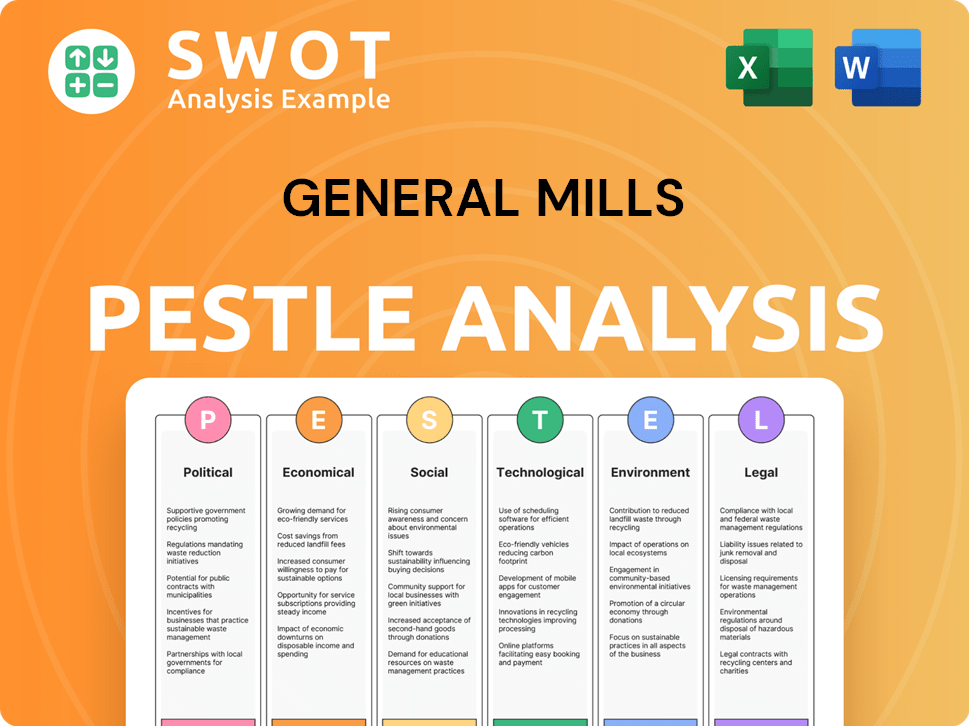
Who Sits on General Mills’s Board?
As of early 2025, the Board of Directors of General Mills is structured with a mix of independent directors and executives. This is a common governance model for publicly traded companies. The board oversees management and acts in the best interests of all General Mills shareholders. The board includes individuals with backgrounds in finance, consumer goods, and global operations. The Chairman and CEO is an executive director, while others are independent, ensuring objective oversight of the General Mills company.
The board's composition reflects a commitment to good corporate governance. The presence of independent directors helps to balance the interests of various stakeholders. The board structure is designed to ensure accountability and effective decision-making for the General Mills corporation. This setup is intended to promote transparency and protect the interests of all investors.
| Board Member | Title | Affiliation |
|---|---|---|
| Jeff Harmening | Chairman and CEO | General Mills |
| Maria S. Stein | Lead Independent Director | Independent |
| Jon R. Moeller | Director | Independent |
General Mills operates under a one-share-one-vote system. This means each share grants one vote on shareholder matters, such as director elections and executive compensation. This democratic voting structure ensures that the interests of all General Mills shareholders are reflected in corporate decisions. There are no special voting rights or dual-class shares. This structure promotes good corporate governance. The system reduces the likelihood of a single entity dominating decision-making. The General Mills ownership structure supports fair representation for all investors.
The Board of Directors at General Mills includes independent directors and executives, ensuring diverse perspectives. The company uses a one-share-one-vote system, providing equal voting rights to all shareholders.
- The board structure promotes objective oversight.
- The voting system ensures fair representation.
- The governance model supports transparency.
- General Mills aims for effective decision-making.
General Mills Business Model Canvas
- Complete 9-Block Business Model Canvas
- Effortlessly Communicate Your Business Strategy
- Investor-Ready BMC Format
- 100% Editable and Customizable
- Clear and Structured Layout
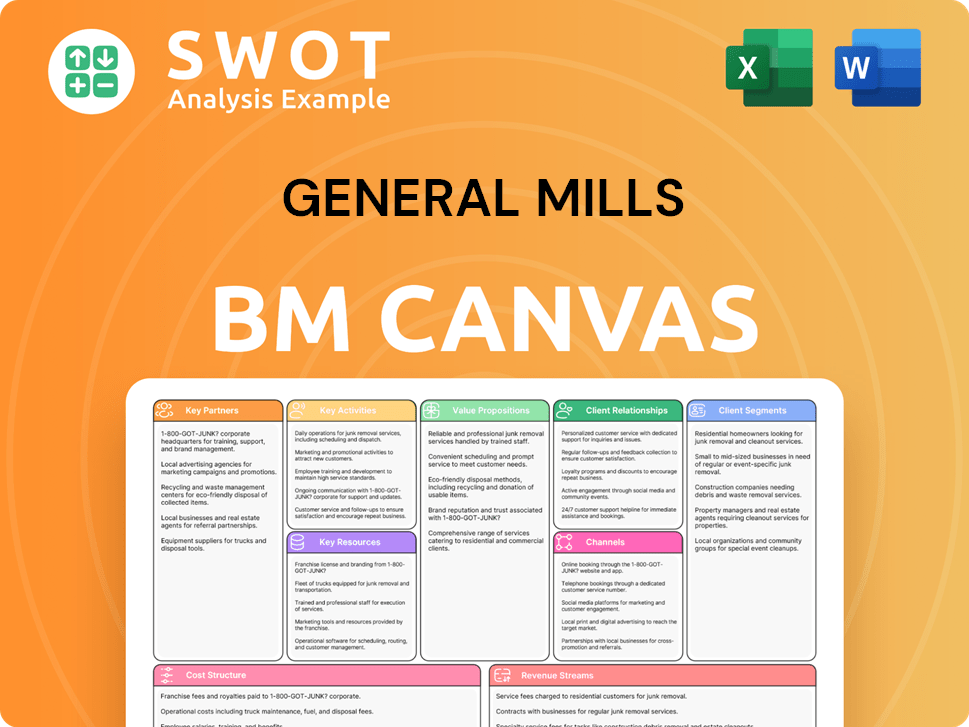
What Recent Changes Have Shaped General Mills’s Ownership Landscape?
Over the past few years, General Mills has shown ownership trends that mirror the broader consumer goods industry. The company's ownership structure has remained largely stable, with institutional investors holding significant stakes. This stability is a key characteristic of the General Mills company, reflecting its mature status as a publicly traded corporation. The focus has been on strategic financial moves, such as share buyback programs, to enhance shareholder value.
In fiscal year 2024, General Mills continued its commitment to returning capital to shareholders through dividends and share repurchases. Acquisitions, like the 2022 purchase of TNT Crust, have subtly influenced ownership dynamics, but haven't fundamentally changed the core ownership. The company's leadership team and board have remained consistent, further contributing to ownership stability. The ongoing presence of major asset managers as significant shareholders underscores the confidence in General Mills' long-term prospects.
| Aspect | Details | Recent Activity (2022-2025) |
|---|---|---|
| Share Buybacks | Reduction of outstanding shares | Ongoing, aimed at increasing earnings per share. |
| Acquisitions | Strategic purchases | Acquisition of TNT Crust in 2022. |
| Institutional Ownership | Stake held by asset managers | Major asset managers consistently hold substantial stakes. |
The ownership landscape of General Mills reflects a focus on long-term value creation. Public statements from the company often highlight growth strategies and shareholder returns, indicating a stable ownership outlook. The company's history, as a publicly traded entity, means that founder dilution is not a recent trend. The food industry's consolidation and the influence of activist investors remain relevant factors, prompting General Mills to maintain strong financial performance. For a deeper dive into the competitive environment, consider exploring the Competitors Landscape of General Mills.
Share buybacks are a common strategy used by the General Mills corporation to return capital to shareholders. This reduces the number of outstanding shares, potentially increasing earnings per share.
Institutional investors, such as asset managers, hold a significant portion of General Mills ownership. This indicates confidence in the company's long-term stability and performance.
Acquisitions, like the purchase of TNT Crust, can subtly shift ownership dynamics. These moves are part of General Mills' strategy to expand its portfolio and market presence.
The company focuses on returning capital to shareholders through dividends and share repurchases. This is a key aspect of General Mills' financial strategy.
General Mills Porter's Five Forces Analysis
- Covers All 5 Competitive Forces in Detail
- Structured for Consultants, Students, and Founders
- 100% Editable in Microsoft Word & Excel
- Instant Digital Download – Use Immediately
- Compatible with Mac & PC – Fully Unlocked
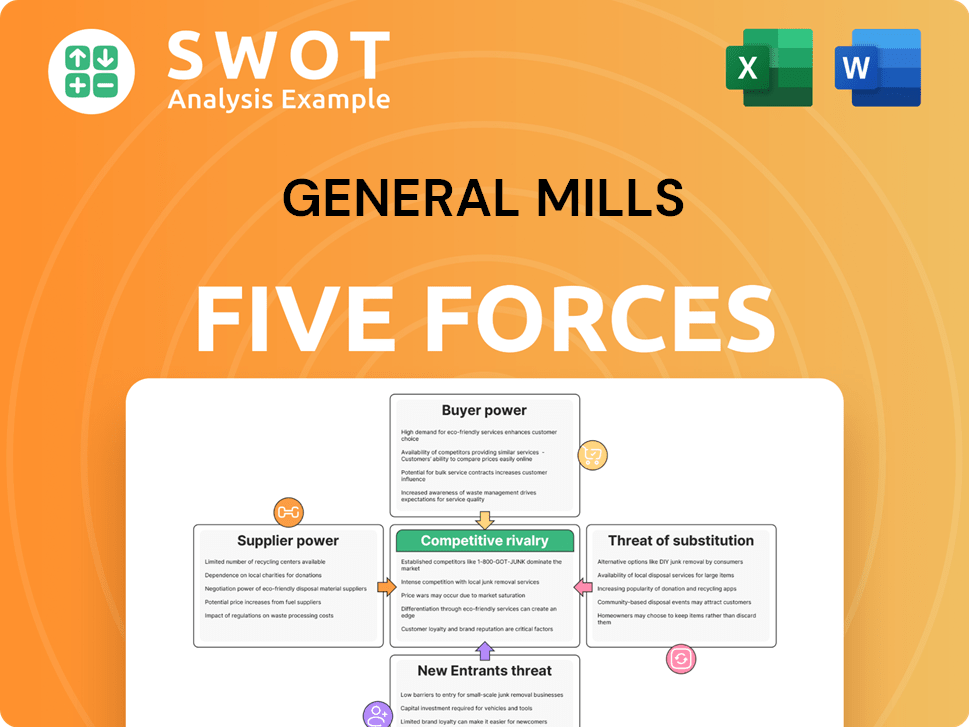
Related Blogs
- What are Mission Vision & Core Values of General Mills Company?
- What is Competitive Landscape of General Mills Company?
- What is Growth Strategy and Future Prospects of General Mills Company?
- How Does General Mills Company Work?
- What is Sales and Marketing Strategy of General Mills Company?
- What is Brief History of General Mills Company?
- What is Customer Demographics and Target Market of General Mills Company?
Disclaimer
All information, articles, and product details provided on this website are for general informational and educational purposes only. We do not claim any ownership over, nor do we intend to infringe upon, any trademarks, copyrights, logos, brand names, or other intellectual property mentioned or depicted on this site. Such intellectual property remains the property of its respective owners, and any references here are made solely for identification or informational purposes, without implying any affiliation, endorsement, or partnership.
We make no representations or warranties, express or implied, regarding the accuracy, completeness, or suitability of any content or products presented. Nothing on this website should be construed as legal, tax, investment, financial, medical, or other professional advice. In addition, no part of this site—including articles or product references—constitutes a solicitation, recommendation, endorsement, advertisement, or offer to buy or sell any securities, franchises, or other financial instruments, particularly in jurisdictions where such activity would be unlawful.
All content is of a general nature and may not address the specific circumstances of any individual or entity. It is not a substitute for professional advice or services. Any actions you take based on the information provided here are strictly at your own risk. You accept full responsibility for any decisions or outcomes arising from your use of this website and agree to release us from any liability in connection with your use of, or reliance upon, the content or products found herein.